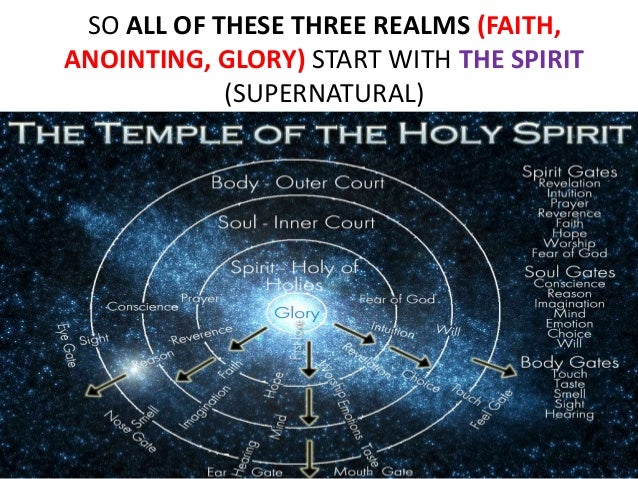Trailokya (Sanskrit: त्रैलोक्य; Pali: tiloka, Wylie: khams gsum) has been translated as 'three worlds,'[1][2][3][4][5] 'three spheres,'[3] 'three planes of existence,'[6] 'three realms'[6] and 'three regions.'[4] These three worlds are identified in Hinduism[citation needed] and appear in early Buddhist texts.
In Buddhist cosmology[edit]
Mar 27, 2004 Lords of the Realm III Review Lords of the Realm III is one of the freshest, most satisfying games produced by Impressions in years, and it's a great real-time strategy game in its own right. Be the master of all you survey on a noble quest to be a king. Raise armies of valiant knights and construct mighty castles. Rule your lands with the dutiful assistance of serfs and merchants. Roll your catapults over enemy bodies and besiege castles while defending your own.
In Buddhism, the three worlds refer to the following destinations for karmic rebirth:
- Kāmaloka the world of desire, typified by base desires, populated by hell beings, preta, animals, ghosts, humans and lower demi-gods.
- Rūpaloka is the world of form, predominately free of baser desires, populated by dhyāna-dwelling gods, possible rebirth destination for those well practiced in dhyāna.
- Arūpaloka is the world of formlessness, a noncorporeal realm populated with four heavens, possible rebirth destination for practitioners of the four formlessness stages.[3]
Theosophical views[edit]
According to Helena Blavatsky's posthumously published Theosophical Glossary (1892):
- Kamaloka (or kamadhatu) is the world of Mara. Kamaloka has, like every other world, its seven divisions, the lowest of which begins on earth or invisibly in its atmosphere; the six others ascend gradually, the highest being the abode of those who have died owing to accident, or suicide in a fit of temporary insanity, or were otherwise victims of external forces. It is a place where all those who have died before the end of the term allotted to them, and whose higher principles do not, therefore, go at once into Devachanic state—sleep a dreamless sweet sleep of oblivion, at the termination of which they are either reborn immediately, or pass gradually into the Devachanic state.[citation needed]
- Rupaloka (or rupadhatu) is the celestial world of 'form' (rupa), or what we call 'Devachan.' With the uninitiated Brahmans, Chinese and other Buddhists, the Rupadhatu is divided into eighteen Brahma or Devalokas; the life of a soul therein lasts from half a Yuga up to 16,000 Yugas or Kalpas, and the height of the 'Shades' is from half a Yojana up to 16,000 Yojanas (where a Yojana measures from five and a half to ten miles). Esoteric Philosophy teaches that though for the Egos for the time being, everything or everyone preserves its form (as in a dream), yet as Rupadhatu is a purely matter world, and a state, the Egos themselves have no form outside their own consciousness. Esotericism divides this world into seven Dhyanas, 'regions', or states of contemplation, which are not localities but mental representations of these.
- Arupaloka (or arupadhatu) is a world that is again divided into seven Dhyanas, still more abstract and formless, for this 'World' is without any form or desire whatever. It is the highest world of the post-mortem Trailokya; and as it is the abode of those who are almost ready for Nirvana, and is, in fact, the very threshold of the Nirvanic state, it stands to reason that in Anupadhatu (or Arupavachara) there can be neither form nor sensation, nor any feeling connected with our three-dimensional Universe.[4]
See also[edit]
Notes[edit]
- ^Monier-Williams (1899), p. 460, col. 1, entry for '[Tri-]loka' (retrieved at http://www.sanskrit-lexicon.uni-koeln.de/scans/MWScan/MWScanpdf/mw0460-trimala.pdf) and p. 462, col. 2, entry for 'Trailoya' (retrieved at http://www.sanskrit-lexicon.uni-koeln.de/scans/MWScan/MWScanpdf/mw0462-tripu.pdf).
- ^Rhys Davids & Stede (1921-25), p. 301, entry for 'Ti-' (retrieved at http://dsal.uchicago.edu/cgi-bin/philologic/getobject.pl?p.1:129.pali). Here, tiloka is compared with tebhūmaka ('three planes').
- ^ abcFischer-Schreiber et al. (1991), p. 230, entry for 'Triloka.' Here, synonyms for triloka include trailokya and traidhātuka.
- ^ abcBlavatsky (1892), pp. 336-7, entry for 'Trailokya' (retrieved at http://www.phx-ult-lodge.org/ATUVWXYZ.htm#t).
- ^Purucker (1999), entry for 'Trailokya' (retrieved at http://www.theosociety.org/pasadena/etgloss/tho-tre.htm).
- ^ abBerzin (2008) renders khams-gsum (Wylie; Tibetan) and tridhatu (Sanskrit) as 'three planes of existence' and states that it is '[s]ometimes called 'the three realms.' Tridhatu is a synonym of triloka where dhatu may be rendered as 'dimension' or 'realm' and loka as 'world' or even 'planet.'


Sources[edit]
- Berzin, Alexander (March 6, 2008). Berzin Archives Glossary. Retrieved Sunday July 13, 2008 from 'Berzin Archives' at http://www.berzinarchives.com/web/en/about/glossary/glossary_tibetan.html.
- Blavatsky, H.P. (1892). Theosophical Glossary. London: Theosophical Publishing Society. Retrieved 2008-07-14 from 'The Theosophical Glossary (United Lodge of Theosophists, Phoenix, Arizona)' at http://theosophicalglossary.net/.
- Fischer-Schreiber, Ingrid, Franz-Karl Ehrhard, Michael S. Diener and Michael H. Kohn (trans.) (1991). The Shambhala Dictionary of Buddhism and Zen. Boston: Shambhala Publications. ISBN0-87773-520-4.
- Monier-Williams, Monier (1899, 1964). A Sanskrit-English Dictionary. London: Oxford University Press. ISBN0-19-864308-X. Retrieved 2008-07-13 from 'Cologne University' at http://www.sanskrit-lexicon.uni-koeln.de/scans/MWScan/index.php?sfx=pdf.
- Purucker, G. de (ed.-in-chief) (1999). Encyclopedic Theosophical Glossary: A Resource on Theosophy. Theosophical University Press. Retrieved from 'The Theosophical Society' at http://www.theosociety.org/pasadena/etgloss/etg-hp.htm.
- Rhys Davids, T.W. & William Stede (eds.) (1921-5). The Pali Text Society’s Pali–English Dictionary. Chipstead: Pali Text Society. Retrieved 2008-07-13 from 'U. Chicago' at http://dsal.uchicago.edu/dictionaries/pali/.
- W. E. Soothill & L. Hodous (1937-2000). A Dictionary of Chinese Buddhist Terms. Delhi: Motilal Banarsidass. ISBN81-208-0319-1.
External links[edit]
- Bullitt, John T. (2005). The Thirty-one Planes of Existence. Retrieved 2007-04-30 from 'Access to Insight' at http://www.accesstoinsight.org/ptf/dhamma/sagga/loka.html.
- 31 Planes of Existence by Bhante Acara Suvanno
Available Platform: DOS
Lords of the Realm II is a strategy meets resource management computer game developed by Impressions Games and published by Sierra On-Line in 1996.
Lord Of The Three Realms Movie
| Year | 1996 |
| Genre | Strategy |
| Rating | 77/100 based on 6 editorial reviews. Add your vote |
| Publisher | Sierra On-Line |
| Developer | Impressions |
| OS supported | Win7 64bit, Win8.1, Windows 10, MacOS 10.6+ |
| Updated | 22 October 2019 |
| TAGS |
Game Review
Lords of the Realm II is a strategy meets resource management computer game developed by Impressions Games and published by Sierra On-Line in 1996. It is the second game in the Lords of the Realm series. It is not so much a sequel as it is a remake that features enhanced graphics and improved gameplay mechanics.
Lord Of The Three Realms Download
The game is set in medieval times and the storyline is just like the first one. The King has died without an heir, leaving his throne ripe for the taking. Five lords are fighting against each other for control of the throne. You can choose to play as the Baron, the Bishop, the Countess, the Knight, or the Princess and set out on your task to take over the realm. You need to conquer counties and set up your castles to stake your claim. Your citizens do your bidding by farming or fighting and everything in between. The resource management is turn based and the turns are marked by changes in season. Also engage in combat with enemy troops using a variety of unit types, though there are no fantasy folk or mages among their ranks. During combat control a single unit or entire formations at once. You can also skip the battle and let the computer decide the outcome. Claim victory by either capturing the enemy flag or annihilate them all.
Lords of the Realm has a simple interface that is easy to pick up. This game is a good starting point for those new to the genre as there is not as much micromanagement. Though they might want to set the difficulty lower. Challenging and well-balanced, this is a good title for strategy enthusiasts as well.
Lord Of The Three Realms Map
Review by: Tasha
Published: 22 February 2017, 6:09 am